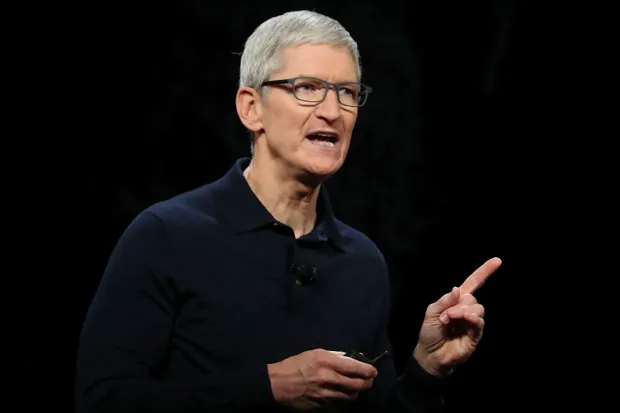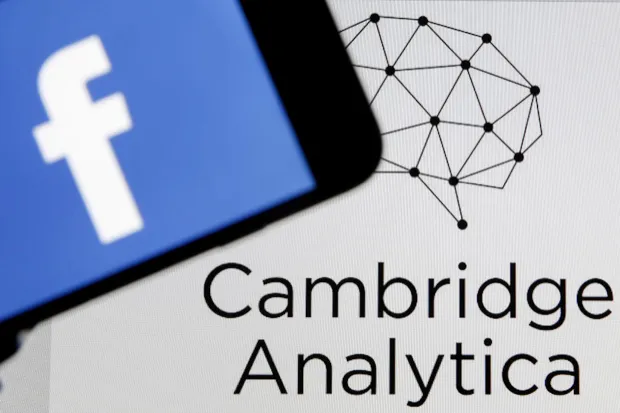Ever looked up from your phone and wondered where the past 30 minutes have gone?
If so, you’re certainly not alone. According toMoment, a time-tracking app with more than 4.8 million users, the average person spends nearly four hours on their phone every day. That’s one-quarter of our waking lives, and much of that time is devoted to social media apps such as Facebook, Instagramand Snapchat.
But while we’re busy burying our noses in our newsfeeds, a strange thing is going on in Silicon Valley: tech insiders have begun to speak out against some of the very products they helped to create.
“I feel tremendous guilt… I think we have created tools that areripping apart the social fabric of how society works,” said Chamath Palihapitiya, Facebook’s former vice president for user growth, last November during a talk at Stanford University’s Graduate School of Business. He added that he himself rarely uses Facebook, and that his children “aren’tallowed to use that sh*t”.
Social media “literally changes your relationship with society, with each other,” said Sean Parker, the founding president of Facebook, at an event in Philadelphia around the same time. “It probably interferes with productivity in weird ways. God only knows what it’s doing to our children’s brains.” Meanwhile, Apple’s chief executive Tim Cook has said that, when it comes to his nephew: “There are some things that I won’t allow. I don’t want them on a social network.”
So what do the social media executives know that we don’t? And what tricks do they use to keep us coming back for more, and more… and more?

The price of a like
First, we need to remember why social media companies would want to get us hooked in the first place. The market value of Facebook (which, it’s worth noting, also owns the popular social media platforms Instagram and WhatsApp) surpassed $500bn before the Cambridge Analytica row. But as anyone with an account knows, you don’t have to pay to use Facebook. It says so right on their home page: “It’s free and always will be.”
Those facts might sound contradictory, but they’re not. Facebook is free to use because we are not the customers. Instead, advertisers are the customers, and our attention is what’s being sold. Think about it: the more time you spend on a social media platform, the more opportunities there are for the platform to show you ads. Every minute you spend on social media is a minute spent making money for someone else.
It’s also a minute spent voluntarily providing data that can be collected and sold. As Antonio García Martínez, a former product manager at Facebook, writes in his memoir, Chaos Monkeys, the company is actually “the regulator of the biggest accumulation of personal data since DNA”. As well as recording and analysing our activities on Facebook itself, the social media company also collects data on many of our other online activities, and it even buys information from data collection companies, such as Experian, about your offline life. This information can include – but is certainly not limited to – your income, your credit history, outstanding loans, your credit limits, and essentially any purchase you’ve ever made with a card.
Facebook itself has shared numerous ‘success stories’ of how companies have used the social media giant’s ability to slice, analyse and make predictions off its data in order to target specific groups of customers. And then there are the recent headlines revealing how this data can be used for political ends, such as the scandal involving Cambridge Analytica, in which it’s alleged that Facebook data was used (without users’ or, supposedly, Facebook’s knowledge) to deliver targeted adverts in support of Donald Trump.

Tricks of the trade
Regardless of whether you find this level of data collection creepy or simply capitalistic (or both), it explains why social media companies would want to capture our attention for as long and as frequently as possible: it’s profitable. And to do this, they build features into their apps that manipulate our brain chemistry. These tricks are borrowed straight from casinos and slot machines, which are widely considered to be some of the most addictive machines ever invented.
Consider the ‘pull-to-refresh’ feature common to social media apps, where dragging the screen downwards prompts the screen to refresh. Not only is the action itself similar to pulling the lever on a slot machine, but it takes advantage of our attraction tounpredictability. Psychologists call this ‘intermittent reinforcements’ (and I call it ‘the reason we date jerks’). Sometimes, when we check social media there’s something exciting waiting for us (a ‘reward’), sometimes there’s not. It’s the unpredictability that keeps us coming back.
Once you’re plopped in front of a slot machine, the casino wants to keep you there – that’s why most casinos are windowless with no clocks. Similarly, once you’re trapped in a spiral of infinite scrolling, social media apps don’t want you to look up. That’s why their feeds are deliberately designed to be endless.

“Companies have systematically removed stopping cues – those brief moments, like reaching the bottom of a screen, that suggest you might want to move on to something else,” says Adam Alter, psychologist at New York University and author of Irresistible: The Rise of Addictive Technology And The Business Of Getting Us Hooked. “Ethical video game developers introduce those cues to split their games into chapters, which liberates players to play the game in chunks rather than in long binge sessions. The same works for tech products. Where Facebook, Twitterand Instagram make their feeds bottomless, introducing natural end points would gently encourage users to move on to other activities.”
In other words, posts on your newsfeed could be presented as pages, just like Google search results. But then you would have to do something active (click through to the next page) in order to continue, which is exactly what app designers want to avoid. Video platforms like YouTube and Netflix use the same technique: they automatically start playing the next video or episode in your queue within seconds of the previous video’s end. Sure, you could press stop, but wouldn’t it be easier to just keep watching?
The dopamine effect
Many of these attention-capturing tricks harness our brain’s dopamine system. Dopamine is a neurotransmitter that is at the heart of all of our habits. “Dopamine is our brain’s way of recording what’s worth doing again,” explains Ramsay Brown, co-founder and chief operations officer at Boundless Mind, a tech start-up that uses our brain’s dopamine system to nudge us toward behaviours that we actually want to engage in. “It’s how we learn from our positive experiences.”
This is important from an evolutionary point of view – dopamine is released, for example, in response to eating or having sex. But the dopamine system of the human brain isn’t able to distinguish between useful habits, such as feeding ourselves or paying the rent on time, and those that are destructive, such as smoking or doing drugs. When released in response to the wrong trigger, dopamine can reinforce habits to the point that they become addictions.
The question of whether we can be ‘addicted’ to our phones in the same way that we can be addicted to substances such as alcohol and drugs is controversial. But there’s no denying that the dopamine system is involved in both. Every time we check our social media feeds and find something novel or exciting waiting for us (in other words, every time we check social media), our brains releasedopamine, which tells our brains that checking social media is worth doing again. And when you add in notifications and alerts, it isn’t long before our brains begin to release dopamine just in anticipation ofchecking our phones.
There’s no shortage of dopamine triggers baked into the design of the social media apps. ‘Like’ buttons take advantage of both our desire for social validation and our love of seeing our ‘score’. Gamification elements, such as Snapchat’s ‘streaks’ feature, which publicly keeps track of how many days in a row you’ve used the app, make users feel compelled to check their apps every day in order to keep up their rating.
Our phones and apps also take advantage of our inherent social impulses and anxieties, including our fear of missing out (FOMO) and the impression that we need to reciprocate when we feel someone has done something for us. Take, for example, those ticks on Facebook, WhatsApp and other platforms that indicate when your friend has read your message. Your friend knows you’ve seen those ticks, so there’s now a social pressure for them to respond. You might even get emails telling you that you have unread messages and notifications, piling on the pressure to log in, lest you miss out on some news or leave someone hanging. And then there are those little dots that indicate when someone is in the process of replying to your message. What’s the likelihood you’re going to put down your phone before you’ve seen their response?
Time for change?
There’s no question that these design features are effective. But what’s good for profits is not so great for our mental health. Studies have linked excessive social media use to sleep deprivation, anxiety, loneliness and depression in teens, and given the design tricks we’ve revealed here, this is perhaps no surprise. The attention-based business model of social media platforms means that their goals and the goals of their users are often inherently at odds. “Social media isn’t designed with your long-term happiness in mind: it’s designed to capture as much of your attention as possible right now,” says Kevin Holesh, creator of the Moment app.
As long as social media platforms continue to make money by selling our attention, they are unlikely to change their practices on their own. “There’s an arms race for attention,” says Alter. “And if you don’t use every tool at your disposal to ensnare consumers, you’ll be left behind. Short of pressure from consumers or government intervention, it’s hard to imagine companies abandoning the hooks that make their products hard to resist.”
Thankfully, there are signs of pushback. In January this year, two of Apple’s major investors wrote an open letter to the company demanding that it offer better parental controls. Soon thereafter, a group of children’s health experts begged Facebook to abandon Messenger Kids, its recently launched platform targeting children under the age of 13. In February, a group of disillusioned tech insiders and investors launched the Center for Humane Technology, an organisation dedicated to advocating – and lobbying for – a more ethical design.
These efforts, if successful, will be slow. But in the meantime, there are things we can – and should – do to develop a healthier relationship with our devices. “If you feed the beast, that beast will destroy you,” said Palihapitiya to his Stanford audience. “If you push back on it, we have a chance to control it and rein it in.”
This is an extract from issue 321 of BBC Focus magazine.
Subscribe and get the full article delivered to your door, or download the BBC Focus app to read it on your smartphone or tablet. Find out more
[This article was first published in May 2018]
Follow Science Focus onTwitter,Facebook, Instagramand Flipboard